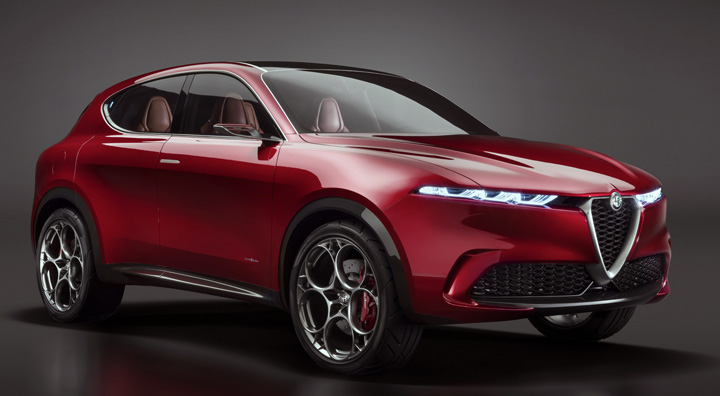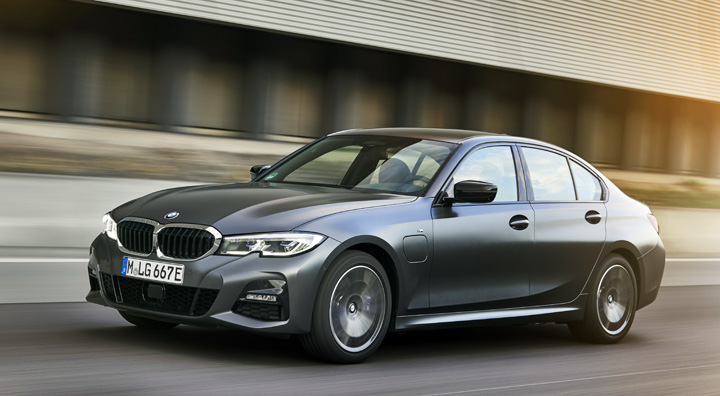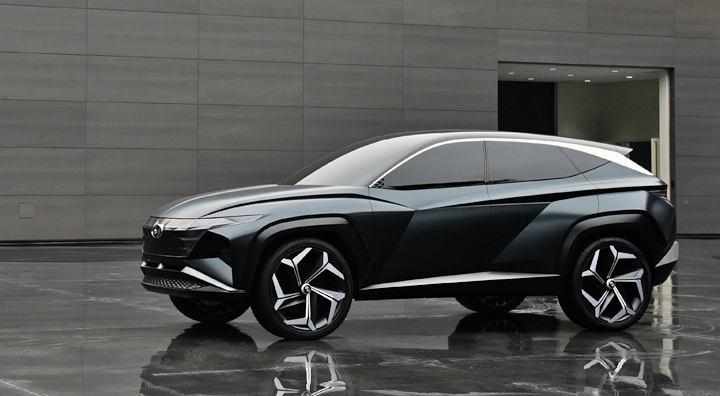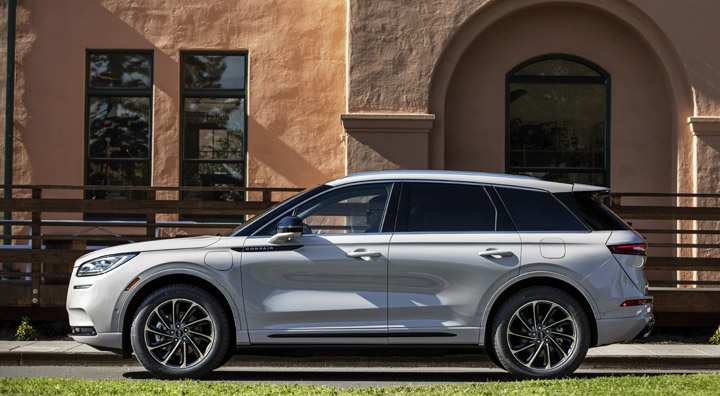EVs may be the future, but a lot of money is being bet on plug-in hybrids filling a lot of parking spots until that future arrives and conquers all. Six new PHEVs and PHEV concepts headed for production debuted at the LA Auto Show, which is open to the public through Dec. 1.
[Estimated Reading Time: 5 min.]
Here’s a guide to those PHEVs, and one very important new conventional hybrid, that made their world or U.S. bows in LA
(Click here for our guide to the new EVs that debuted at the LA Auto Show.)
Alfa Romeo Tonale PHEV Concept
This is a concept car that foreshadows a new subcompact crossover that will slot beneath the Alpha Romeo Stelvio.
The Tonale first was shown at the Geneva Auto Show early this year, but this is its first time on the floor at the LA show.

Alpha says the Tonale will have a plug-in hybrid variant, but hasn’t provided much other info.
Current guesswork is that it will use a variation of the PHEV powertrain introduced at the Geneva show for upcoming models of the Jeep Renegade and Compass small crossovers.
If so, that would mean an all-wheel drive system with a 1.3-liter gas engine up front and an electric motor riving the rear wheels. The Jeep specs call for up to 240 hp and an all-electric range of 30 miles – likely a bit more in the far-more aerodynamic Alfa.
BMW X3 Crossover PHEV
BMW announced this one before the LA Auto Show but it is getting its first U.S. display there. It looks like the conventional internal combustion model X3 crossover, with the addition of a charge-port door behind the front-left wheel arch and, of course, a plug-in hybrid powertrain.
It is slated to go on sale in Spring 2020.

The crossover is formally called the X3 xDrive30e, and BMW says an dual-motor all-electric version, the iX3, will follow in 2020.
The powertrain for the X3 PHEV couples a 184-hp, 2-liter gas engine with a 113-hp electric motor integrated into the eight-speed automatic transmission. Combined output should be somewhere in the area of 250 hp.
All-electric range is likely to be in the low 20 miles.
BMW says the 12-kWh battery pack stows under the rear seats and that total cargo space doesn’t suffer much.
BMW 330e PHEV sedan.
This is the sedan version and like the crossover, it looks just like its all-gas counterpart except for the charge port door on the left front flank.

It shares the same powertrain as the crossover PHEV but is more aerodynamic so should get about 30 miles of all-electric range in the U.S.
It does lose about 23 percent of the standard 3 Series’ cargo capacity though. Trunk space is down to 13.2 cubic feet from the gas-only models’ 17 cubes.
The 330e goes on sale in the latter part of next year as a 2021 model.
Honda CR-V Hybrid
The CR-V crossover finally gets a hybrid (no plug) version, going on sale in 2020.
It’s a Honda, it’s a CR-V, it’s a gas-electric hybrid and all-wheel drive will be standard on all trim levels.

The powertrain combines a 2-liter gas engine and dual electric motors – the same system used on the Accord hybrid – for 212 horsepower combined. The electric motors send torque to the rear wheels, the gas engine drives the front wheels.
It is expected to start at around $28,000 to remain competitive with the Toyota RAV4 Hybrid, and will be loaded with the Honda Sensing suite of driver assist and safety systems.
The battery and hybrid system control unit are under the floor, and Honda says that passenger space and cargo capacity remains the same as in the gas-only CR-V.
Hyundai VisionT PHEV Concept
This is widely believed to be a concept that hints strongly at what the next generation Hyundai Tucson crossover will look like.

The company hasn’t provided any powertrain details, other than to say that the concept has a plug-in hybrid system.
One neat feature is “hidden” headlights – LED lights that appear to be part of the chrome trim on the grille until they are turned on.
The design is clean and fairly seamless, and except for a bright strip delineating the roofline, pretty much abandons the use of bright chrome in favor of matte and satin finishes.
Lincoln Corsair Grand Touring PHEV
The Corsair, Lincoln’s smallest crossover, gets a plug-in hybrid variant called the Grand Touring.

It will be available next summer, and it is our guess that it likely will start in the low $50,000s before any incentives.
The Corsair Grand Touring gets a 2.5-liter gas engine and a single electric motor, good for a combined 266 horsepower.
Lincoln said it will get about 26 miles of all-electric range.
Toyota RAV4 Prime PHEV
This is a 2021 production model that Toyota promised last year when it debuted the redesigned 2019 RAV4 and RAV4 Hybrid.
The PHEV shares the same equipment and styling as the standard hybrid.
The big news, of course, is the powertrain.

Toyota says the RAV4 Prime will be the fastest crossover and 2nd fastest vehicle in its lineup, capable of a 0-60 sprint in 5.8 seconds. Only the Toyota Supra sport coupe is quicker.
The 176-hp, gas-only RAV4 gets an 8-second ET for 0-60 acceleration; the plugless RAV4 Hybrid, with 219 hp, boosts that to 7.4 seconds.
The RAV4 Prime’s speed comes from dual electric motors that are more powerful than those in the conventional hybrid, plug a larger battery pack with more energy to burn.The Prime’s gas engine is the the same 2.5-liter, 176 hp gas engine that’s standard in all RAV4s. But combined output of the gas-electric hybrid drive system is 302 horsepower, up almost 38 percent from the hybrid.
The RAV4 Prime’s electric drive system, its motors powered from a rechargeable lithium-ion battery pack, can deliver up to 39 miles of all-electric range before reverting to standard hybrid duties.
On-demand electric all-wheel drive is standard, as it is on the plugless RAV4 hybrid.
There will be two trim levels: SE, with 18 inch-wheels, an 8-inch touchscreen and blacked-out exterior trim, and XSE, which adds 19-inch alloys, a new 9-inch touchscreen, paddle shifters, wireless phone charging, a chrome-trimmed lower front spoiler, vertical LED daytime running lights and synthetic upholstery (Toyota’s SofTex) with PHEV-unique contrast stitching and texture.
Pricing wasn’t disclosed – it won’t go on sale until next summer – but the top-of-the-line 2020 RAV4 Hybrid Limited starts at $37,750, so the base RAV4 Prime PHEV is likely to be close to $40,000 before any incentives.
Toyota hasn’t released battery specifications, but says the RAV4 Prime qualify for the full $7,500 federal tax credit for EVs. That requires a minimum 16 kWh battery.
